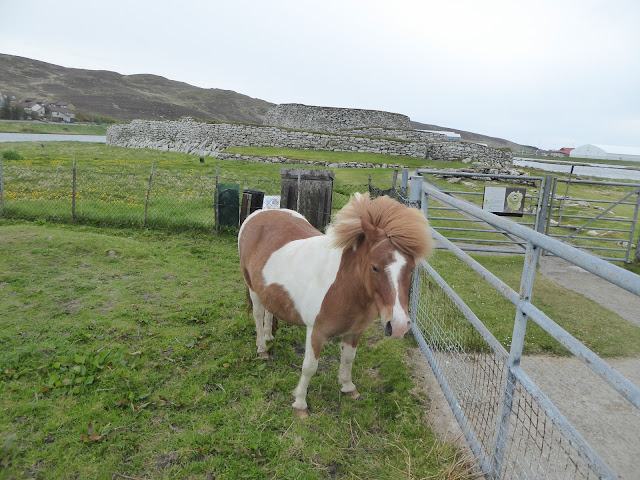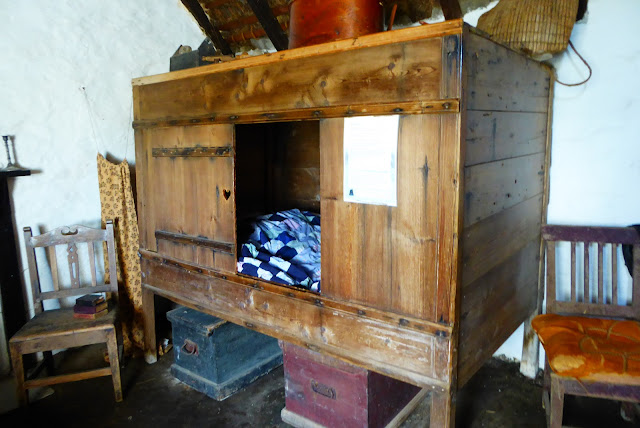Mousa Broch, the best preserved Iron Age building in Europe is on Mousa Island and dates back to 100 BC-100 AD. We had to take a small ferry to see it.
It has one doorway to the interior, numerous small rooms inside the walls opening on to a central space with the fire in the middle. We climbed narrow stone stairs that curve upwards inside the wall to access the walkway that encircles the very top of the walls and would have made an excellent lookout point. The broch is both a home and a fort.
Clickimin Broch is in the town of Lerwick, across the road from the supermarket, behind a pony paddock.
It might have looked like this when people lived here.
This is a replica of a broch beside a current archaeological dig that is revealing a village of wheelhouses (they are shaped like wheels with spokes) at Old Scatness right next to the airport.
Not only are there numerous Iron Age ruins on Shetland, but there are also many Viking sites. Many place names are of Viking origin. Shetlanders once had their own language called Norn which included Norse (Viking) words.
Replica of a Viking longhouse and boat at Haraldswick on the island of Unst.
Very spacious inside.
The Vikings held regular parliament gatherings on a tiny island in a large loch on the centre of the main island.
In 1469 Shetland was mortgaged to Scotland by the King of Denmark and Norway as part of a dowry for his daughter who married King James III of Scotland, and so begins Shetland's Scottish history. There are numerous medieval castle ruins. Scalloway Castle is the best preserved.
Its builder, Patrick Stewart, was not a nice man. Eventually his nastiness caught up with him and he was executed in 1615 for treason.
Poorer people - crofters (farmers) and fishermen etc. Lived in small two roomed cottages like this right into the early 20th century.
They used box beds with sliding doors to help keep warmth in. Two adults and/ or a number of children could sleep in each bed. Often a dozen or more people, three generations of a family, lived together in each cottage.
As in the rest of Scotland, many were evicted from their homes during Clearances during the 1800s when the lairds (landowners) decided they could make more money grazing large numbers of sheep than from collecting rent. There are ruined crofts, houses and stone walls everywhere.
Shetland has almost no trees. Humans consumed them long ago, but it has an abundance of peat; semi decayed plant material, almost coal, that is cut and stacked to dry out and then burned in fire places in the same way it has been done for many centuries. Peat fires do not smell very nice.
And there is still a laird who owns a lot of the land although not as much as in the past. Laws were passed to protect small landowners from being unjustly evicted by lairds and to give them the right to buy the land. This is the current laird's house, built around 1600.
The past is the present. People here are still very much in touch with their ancestors.























I can't even imagine what it's like to stand in the presence of so much history.
ReplyDeleteIt is hard to comprehend
DeleteGreat stories. But I do think Patrick Stewart is a nice man, I thought he was very good in Star Trek.
ReplyDeleteHa ha ha, very funny. I wonder if they are related.
Delete